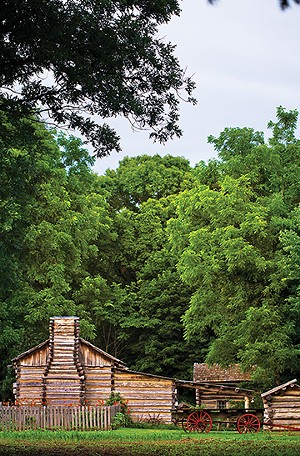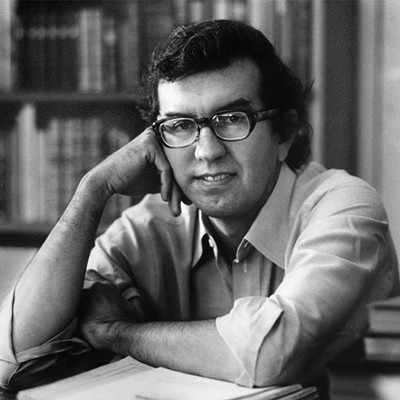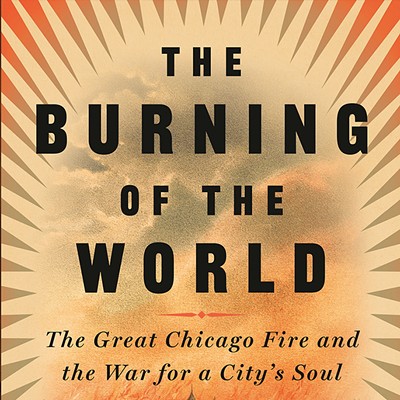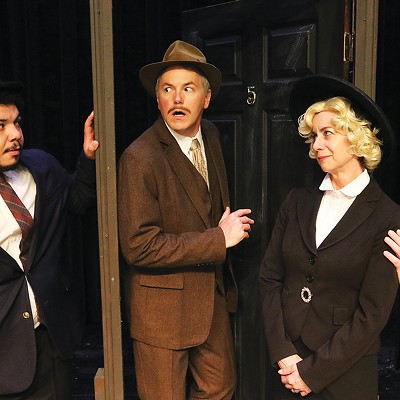
If not for Abraham Lincoln, New Salem would have been just another frontier community lost to history. Instead, the people, places, and events live on in books, articles, plays, and a reconstructed village aptly named Lincoln’s New Salem State Historic Site.
Founded in 1829 adjacent to a mill on the Sangamon River, New Salem grew to a population of perhaps 25 families at its zenith, but by 1840 all had moved on, some to nearby Petersburg, which had become the county seat in 1839 when Menard County was carved out of Sangamon County. Lincoln arrived at New Salem in 1831 and left in 1837 for Springfield and a career in the law, bookending the village’s most promising years as a commercial center when area farmers brought their corn for grinding at the mill, purchased goods and services that they could not provide themselves, and socialized at the stores/taverns and at political, social, and religious gatherings. New Salem residents no doubt quickly recognized outsiders.
How much notice the residents took of the gangly, ambitious 21-year-old is perhaps debatable, but several decades later they eagerly shared remembrances of the man who would become the martyred 16th president. Those stories – of Lincoln extricating a flatboat from the milldam, of wrestling Jack Armstrong, of becoming unhinged by Ann Rutledge’s death – have been told and retold countless times since they were gathered in the 25 years after Lincoln’s death by his law partner, William Herndon. Now, Chicago native Joseph M. Di Cola turns to the people and their stories again in New Salem: A History of Lincoln’s Alma Mater.

Of course, new sources have come to light in the 60 years since Thomas updated his study. In the intervening years, old material has been examined and reexamined, while new material, some archival and some gleaned from archaeological investigations, has come to light. Then too, there is the newfound respect for the value of reminiscences collected by Herndon after Lincoln’s death, especially those of people who knew Lincoln when he first arrived at New Salem in 1831, by his own 1843 description as “a strange, friendless, uneducated, penniless boy.” But like those New Salem settlers responding to Herndon’s questions after Lincoln’s death – when they knew the arc of Lincoln’s personal story – Di Cola takes for granted that readers already know that the material is important, making his task not an interpretive one of explaining how Lincoln’s experiences at New Salem contributed to his development, but rather one of creating a readable narrative of the people, places, and events that surrounded him.
The book is divided into eight parts, with sections on New Salem’s founding, its residents, neighbors, its decline, and reconstruction. The final chapter brings the history to the present day. Di Cola devotes 26 pages to the seven years (1831-1837) that Lincoln spent at New Salem, recounting his activities by year. That organization of the book leads to some repetition, as stories are repeated, for instance, the establishment of the Lincoln-Berry store is covered both in the “Residents” and “Abraham Lincoln at New Salem” sections, as is Ann Rutledge. A proper-name index will helpfully guide readers who are looking for all references to an individual.
Photographs – 40 of them – are scattered throughout the book. Some are later photographs of former village residents, of tombstones, and of hand-drawn maps made long after the village’s demise. The earliest photograph in the book is one from the 1890s, showing a strikingly barren landscape where log buildings had once stood. But by the early 1900s, as ancestors of the original settlers joined area residents to preserve the site, the once “desolate” place took on new life, with the Old Salem Lincoln League taking the lead in reconstructing several log buildings and organizing a pageant in 1918 (for the state’s centennial) that was touted as “perhaps the greatest spectacle ever planned in the county.” The photographs of “house-raising day” show groups of men stacking log walls that would re-create the Rutledge Tavern and Denton Offutt Store.
By 1919, local boosters had successfully lobbied for the State of Illinois to take over the partially reconstructed village, and the village as we know it today began to take shape in the 1930s, with much of it built by the Civilian Conservation Corps, a New Deal public works program. Photographs show young men of the CCC at work shaping logs and planting hundreds of trees to replace those that had been felled 100 years earlier to build the original buildings.
The book is celebratory in nature, so you won’t find a discussion of how the village has fared in recent years with dwindling state budgets that have left the site woefully understaffed and the buildings in need of repair. Indeed, this is a book that springs from the author’s deep interest in Abraham Lincoln that dates to his childhood. For this volume, he examined many of the standard sources, including the biography by Congregationalist minister William E. Barton, who declared in his 1920 study that “New Salem has been rightly called Lincoln’s alma mater” for its role in teaching him “how to deal with men.”
Di Cola’s book is a good-looking, carefully edited six-by-nine-inch volume published by The History Press, which specializes in local and regional history. Comparisons between Thomas and Di Cola may be inevitable, and the casual reader may well find Di Cola’s book more satisfying. One won’t find new interpretations here, but you’ll get a readable, well-illustrated, guide to the history of the original village and its reconstruction as well as recollections about its most famous resident and the people he interacted with 180 years ago.
Evelyn Taylor is the retired editor of the Journal of Illinois History.



















